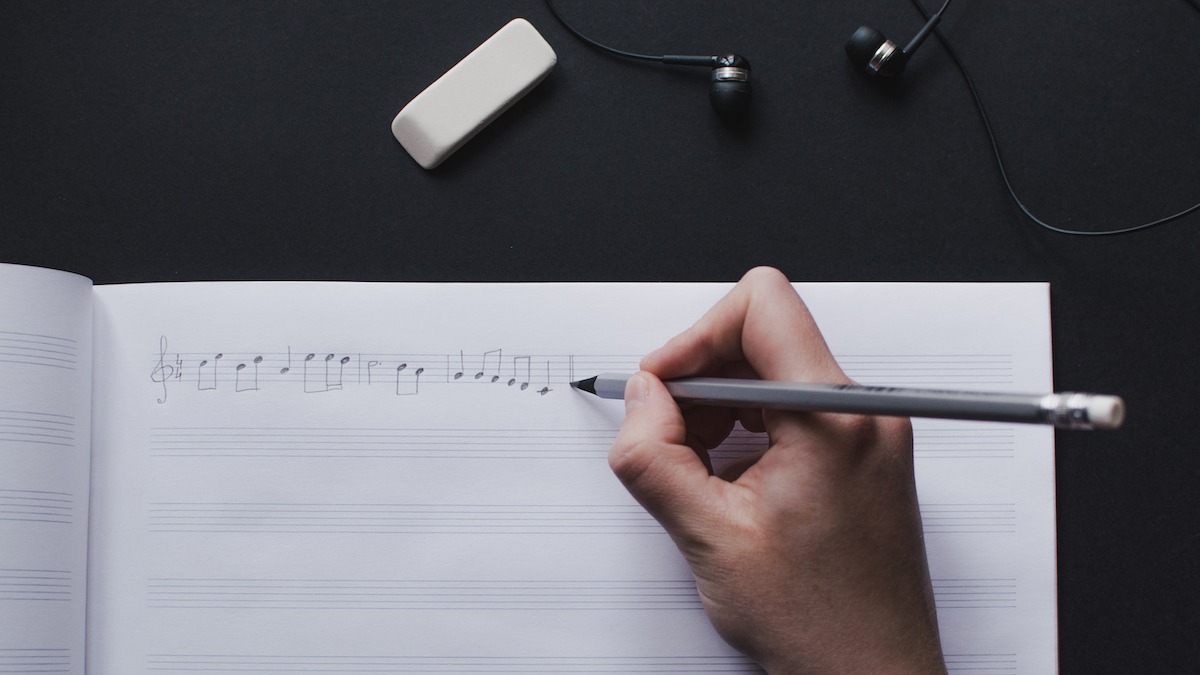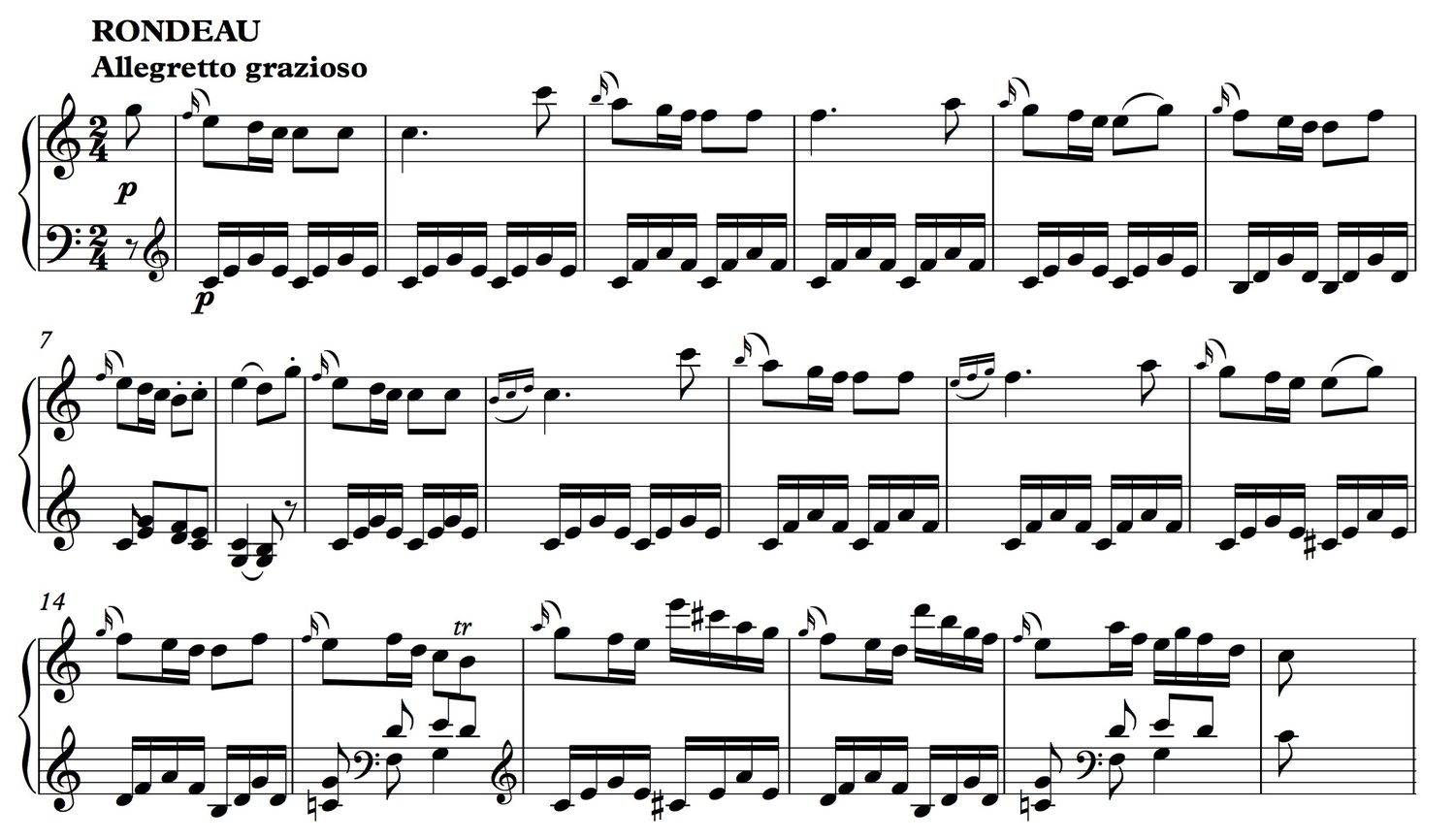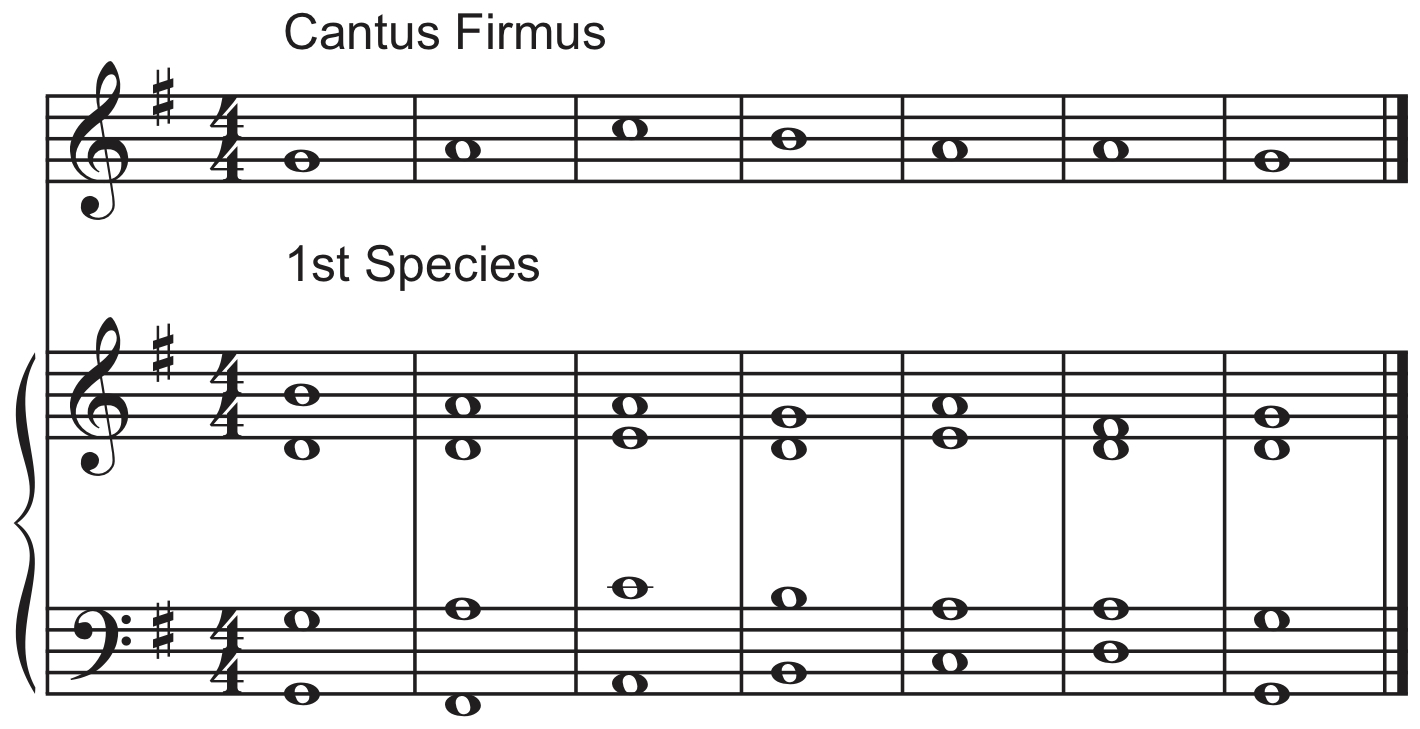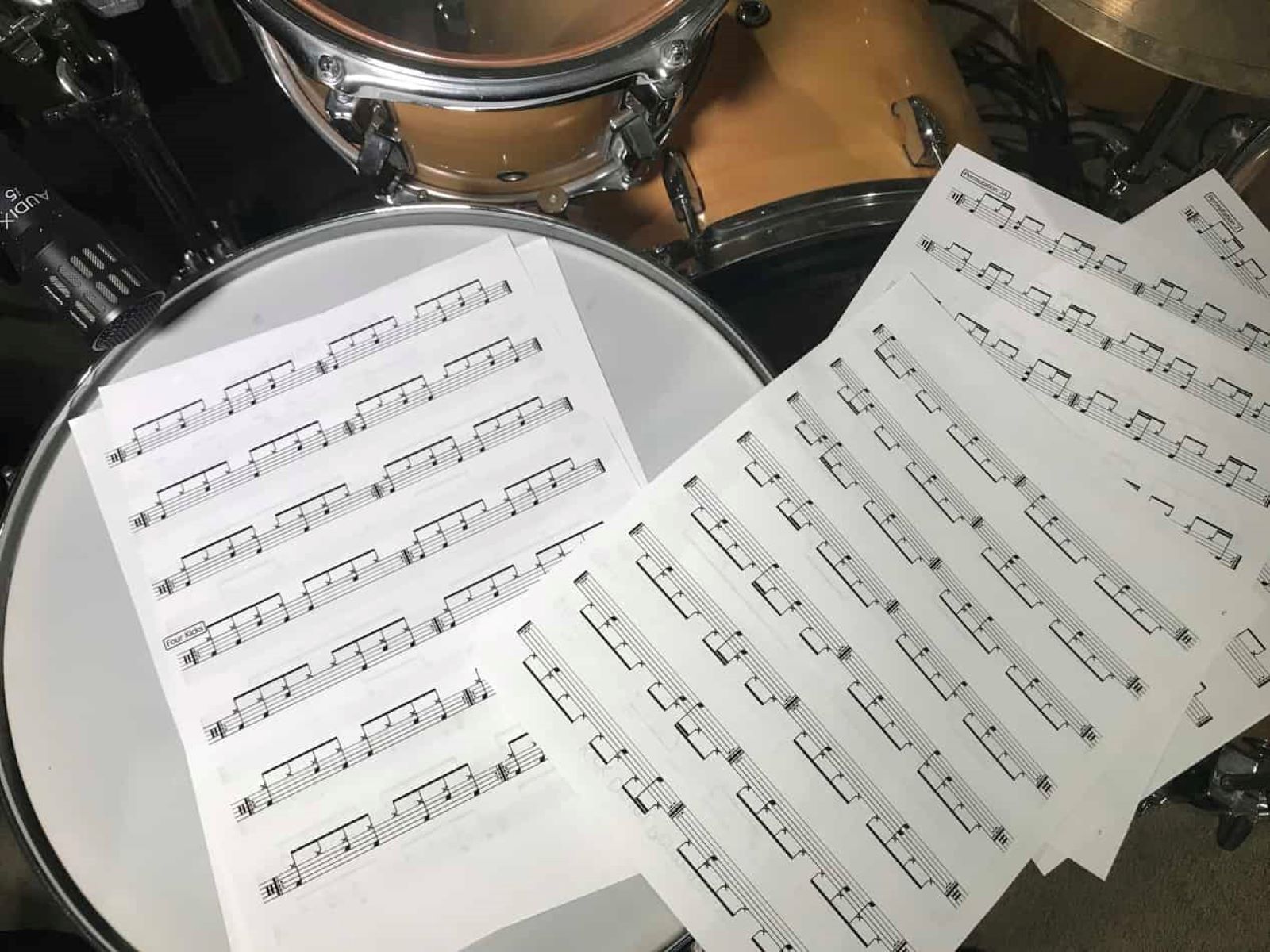

Reggae
How To Write Reggae Music
Modified: February 15, 2024
Learn how to write authentic Reggae music with our comprehensive guide. Discover the essential elements, techniques, and historical influences that create the iconic Reggae sound.
(Many of the links in this article redirect to a specific reviewed product. Your purchase of these products through affiliate links helps to generate commission for AudioLover.com, at no extra cost. Learn more)
Table of Contents
- Introduction
- Understanding the Roots of Reggae Music
- Getting Familiar with Reggae Rhythm and Timing
- Exploring Reggae Chord Progressions
- Mastering the Art of Writing Lyrical Content for Reggae Songs
- Incorporating Jamaican Patois and Slang in Your Reggae Lyrics
- Utilizing Instrumentation and Arrangement in Reggae Music
- Adding Melodic Hooks and Catchy Choruses to Your Reggae Songs
- Incorporating Dub Techniques for a Unique Reggae Sound
- Final Tips and Techniques for Writing Reggae Music
- Conclusion
Introduction
Reggae music originated in Jamaica in the late 1960s and has since become a global phenomenon, known for its distinctive rhythm, catchy melodies, and powerful lyrical messages. With its roots deeply embedded in Jamaican culture and history, Reggae has evolved into a genre that celebrates social justice, equality, and love.
Writing Reggae music requires a deep understanding of its unique elements, including rhythm, chord progressions, lyrics, vocal delivery, and instrumentation. In this article, we will delve into the art of writing Reggae music, exploring the various techniques and tools that will help you create authentic and captivating songs.
Whether you are a seasoned musician or someone who is just starting out, this guide will provide you with valuable insights and tips on how to write Reggae music that resonates with your audience.
Before we dive into the specifics, it’s important to note that Reggae is a genre rooted in cultural and political expression. It emerged as a form of protest against social injustice and oppression, giving a voice to the marginalized and disadvantaged. As you write Reggae music, it’s essential to honor and uphold these values and use your lyrics to address important issues in a thoughtful and meaningful way.
Now that we have set the foundation, let’s explore the key elements of writing Reggae music in more detail, starting with understanding its roots.
Understanding the Roots of Reggae Music
To write authentic and captivating Reggae music, it’s crucial to have a deep appreciation for its historical and cultural roots. Reggae music emerged in Jamaica during the late 1960s, evolving from earlier genres such as Ska and Rocksteady. It was heavily influenced by African rhythms, American R&B, and Jamaican folk music.
The birth of Reggae can be traced back to the socio-political climate of Jamaica. The lyrics of early Reggae songs often addressed social issues, such as poverty, inequality, and corruption. Artists like Bob Marley, Peter Tosh, and Jimmy Cliff used their music as a platform to shed light on the struggles faced by the Jamaican people.
The rhythm in Reggae music is characterized by its syncopated basslines and offbeat guitar and keyboard accents. This distinctive rhythm, known as the “one drop” pattern, creates a laid-back groove that is instantly recognizable. The use of percussion instruments, such as the bongo drums and the tambourine, further contributes to the rhythmic richness of the genre.
Another defining element of Reggae is its emphasis on the bassline. The bass guitar plays a prominent role, providing a melodic foundation and driving the music forward. To capture the essence of Reggae in your songwriting, pay close attention to the interplay between the bassline and the other instruments.
Furthermore, Reggae is renowned for its strong vocal melodies and harmonies. The artists’ soulful and heartfelt delivery enhances the emotional impact of the lyrics. It’s important to explore different vocal techniques, such as melisma and vocal improvisation, to infuse your Reggae songs with depth and emotion.
When it comes to lyrical content, Reggae music often delves into themes of social justice, spirituality, love, and unity. Engage your audience by crafting meaningful and relatable lyrics that resonate with their experiences. Use storytelling techniques and vivid imagery to paint a picture that captivates the listener.
In the next section, we will explore the importance of rhythm and timing in Reggae music, as well as techniques for creating compelling chord progressions. Understanding these fundamental aspects will help you create the rhythmic foundation of your Reggae compositions.
Getting Familiar with Reggae Rhythm and Timing
One of the key elements that sets Reggae music apart is its distinctive rhythm and timing. Understanding and mastering these rhythmic elements is essential for writing authentic and engaging Reggae songs.
Reggae music is known for its laid-back groove and syncopated rhythm. The most common rhythm pattern in Reggae is known as the “one drop” rhythm, characterized by the emphasis on beats 2 and 4, with the kick drum playing on beat 3. This creates a unique feel that is instantly recognizable and sets the foundation for the rest of the instruments to groove.
To get familiar with the Reggae rhythm, it’s essential to listen to a wide range of Reggae music and study the drum patterns. Pay attention to the relationship between the kick drum, snare drum, and hi-hat, and how they interact to create the distinctive Reggae groove. Practice playing along with Reggae tracks or jamming with other musicians to internalize the rhythm and develop a solid sense of timing.
In addition to the drum patterns, the bassline plays a crucial role in defining the rhythm of a Reggae song. The bass guitar typically plays in a syncopated manner, accentuating offbeats and adding depth to the overall groove. Study the basslines of iconic Reggae tracks and experiment with creating your own basslines that complement the rhythmic foundation of your song.
Furthermore, Reggae music often incorporates skanks, which are rhythmic chords played on the guitar or keyboard. The skank typically falls on beats 2 and 4, reinforcing the syncopation and adding another layer of rhythm to the music. Experiment with different chord voicings and rhythmic patterns to find the skank that best fits the mood and vibe of your song.
When writing Reggae music, it’s important to pay attention to the timing and feel of the instruments. Reggae is known for its relaxed and laid-back feel, so aim for a loose and groovy performance. Avoid rushing the rhythm or playing too tight. Let the instruments breathe and give the music a natural flow.
Lastly, don’t be afraid to experiment with polyrhythms and syncopation in your Reggae compositions. These techniques can add complexity and texture to your music, creating a multi-layered rhythmic experience for the listener.
By getting familiar with the Reggae rhythm and timing, you will be able to create the foundation for your Reggae compositions. In the next section, we will explore the importance of chord progressions and how to create engaging harmonies for your Reggae songs.
Exploring Reggae Chord Progressions
Chord progressions are an essential component of any song, and Reggae music is no exception. Understanding and utilizing the right chord progressions can help create the signature sound and vibe of Reggae music.
In Reggae, the most common chord progression is the “one-drop” progression, which typically involves using the I-IV-V chords in a major key. For example, in the key of C major, the chord progression would be C-F-G. This progression provides a solid foundation for the song and allows for variations and embellishments.
While the one-drop progression is a staple in Reggae, it’s important to experiment with different chord voicings and inversions to add variety and interest to your music. Try using different rhythm guitar techniques, such as the skank or staccato strumming, to create a rhythmic and percussive element that complements the overall groove.
Additionally, you can incorporate secondary dominant chords to add tension and movement to your chord progressions. This involves using chords that are outside the key but lead to the next chord in the progression. For example, in the key of C major, you can use the E7 chord before resolving to the A minor chord (IV chord), creating a sense of anticipation and resolution.
Another technique commonly used in Reggae is chord substitutions. This involves replacing one chord with another that shares a similar function or sound. It can add color and unique harmonies to your music. Experiment with substituting chords within the one-drop progression and see how it changes the overall mood and feel of your song.
It’s worth noting that while Reggae is typically associated with major key progressions, minor key progressions are also common and can add a different flavor to your compositions. Experiment with minor chord progressions and explore the emotional depth it brings to your Reggae songs.
As with any songwriting, the key is to trust your ear and let your creativity lead the way. Don’t be afraid to break the rules and experiment with different chord progressions to create your unique sound within the Reggae genre.
In the next section, we will explore the art of writing compelling lyrical content for Reggae songs, an integral part of conveying the powerful messages and emotions that Reggae is known for.
Mastering the Art of Writing Lyrical Content for Reggae Songs
Reggae music is renowned for its powerful and thought-provoking lyrics that tackle social issues, love, spirituality, and personal experiences. Mastering the art of writing lyrical content is key to creating impactful and authentic Reggae songs.
When writing Reggae lyrics, it’s important to have a clear message or intention. Identify the theme or topic you want to address and determine what emotions or thoughts you want to evoke in your audience. Whether it’s shedding light on social injustice, spreading love and unity, or sharing personal experiences, clarity of purpose will guide your lyrical journey.
Reggae lyrics often incorporate storytelling techniques, vivid imagery, and symbolism to engage the listener. Paint a picture with your words and draw them into the narrative. Use descriptive language to create an emotional connection and allow the listeners to relate to the message you’re portraying.
In addition to storytelling, repetition plays a prominent role in Reggae lyrics. Phrases and choruses often repeat throughout the song, creating a hypnotic and memorable effect. This repetition allows the listener to grasp the message and become part of the experience. Craft catchy and concise phrases that can be easily sung along to and resonate with the audience.
An important aspect of writing Reggae lyrics is maintaining authenticity. Reggae music originated in Jamaica and carries a distinct cultural and linguistic identity. Incorporating Jamaican Patois, slang, and cultural references can add an extra layer of authenticity to your songs. However, it’s essential to do so respectfully and accurately, ensuring that the message is still accessible to a wider audience.
Reggae lyrics often tackle serious and profound subjects, but it’s important to balance the weight with moments of hope, love, and positivity. Infuse your lyrics with uplifting and empowering messages, reminding listeners that change is possible and that unity and love can overcome adversity.
Collaboration can play an instrumental role in enhancing the lyrical content of your Reggae songs. Work with other songwriters, poets, or artists to bring diverse perspectives and ideas to the table. Embrace different viewpoints and refine your lyrics together to create something truly impactful.
Lastly, listen to a wide range of Reggae music from different eras and artists to gain inspiration and understanding of the genre’s lyrical traditions. Study the lyrics of legendary artists such as Bob Marley, Peter Tosh, and Burning Spear, to see how they effectively convey their messages through their words.
By mastering the art of writing lyrical content for Reggae songs, you will be able to communicate powerful messages and capture the essence of the Reggae genre. In the next section, we will explore the incorporation of Jamaican Patois and slang in your Reggae lyrics, adding an authentic touch to your songs.
Incorporating Jamaican Patois and Slang in Your Reggae Lyrics
Jamaican Patois, also known as Jamaican Creole, is an integral part of the cultural identity of Reggae music. Incorporating Jamaican Patois and slang into your Reggae lyrics can add an authentic and unique flavor to your songs.
Jamaican Patois is a vibrant and expressive language that evolved from the mixing of various African and European languages. It is characterized by its distinct pronunciation, vocabulary, and grammar. By incorporating Jamaican Patois into your lyrics, you pay homage to the roots of Reggae music and add an element of cultural authenticity.
When using Jamaican Patois in your lyrics, it’s important to strike a balance between preserving the authenticity and ensuring that the message remains accessible to a broader audience. Consider using a mixture of Jamaican Patois and standard English to create a lyrical blend that captures the spirit of Reggae while still conveying the meaning to listeners who may not be familiar with the language.
In addition to Jamaican Patois, incorporating Jamaican slang can further enhance the authenticity of your Reggae lyrics. Jamaican slang is dynamic and constantly evolving, and it brings a sense of local flavor and personality to the music. Familiarize yourself with popular Jamaican slang terms, such as “irie” (meaning feeling good), “irie vibes” (referring to a positive and peaceful atmosphere), or “one love” (symbolizing unity and harmony).
The use of Jamaican Patois and slang can add depth to your lyrics. It can help convey emotions, create vivid imagery, and establish an immediate connection with the listener. However, it’s important to use these linguistic elements respectfully and accurately. Misusing or overusing Jamaican Patois and slang may come across as inauthentic or disrespectful to the culture. Familiarize yourself with proper usage through research and study, and consult with Jamaican speakers or experts if needed.
Remember that the goal is to authentically capture the spirit of Reggae music. Incorporating Jamaican Patois and slang should enhance the overall message and vibe of your song, and make it resonate more deeply with your audience.
In the next section, we will explore how instrumentation and arrangement contribute to the unique sound of Reggae music and how you can utilize them to create compelling compositions.
Utilizing Instrumentation and Arrangement in Reggae Music
Instrumentation and arrangement play a pivotal role in creating the distinct sound and vibe of Reggae music. Understanding how to utilize these elements effectively will help you craft captivating and authentic Reggae compositions.
The instrumentation in Reggae typically consists of drums, bass, guitar, keyboards, and various percussion instruments. Each instrument has a specific role in creating the rhythmic and melodic foundation of the music.
The drums in Reggae are characterized by their emphasis on the kick drum on beat 3 and the use of syncopated patterns. The snare drum and hi-hat work together to create a laid-back groove. Experiment with different drum patterns to find the right balance between simplicity and complexity, allowing the drums to perfectly complement the other instruments.
The bass guitar plays a crucial role in driving the rhythm of a Reggae song. It typically follows the one-drop rhythm and provides a melodic foundation. Pay special attention to the technique and tone of the bass, as it can greatly impact the overall feel of the music.
The guitar in Reggae can be divided into rhythm guitar and lead guitar. The rhythm guitar often plays a prominent role with its skank patterns, providing the distinctive offbeat accents. The lead guitar adds melodic elements, fills, and solos to enhance the musicality.
Keyboards add depth and texture to the arrangement of a Reggae song. They can provide lush chords, melodic hooks, or rhythmic patterns, contributing to the overall groove and ambiance. Experiment with different keyboard sounds and textures to find the perfect fit for your song.
Percussion instruments, such as bongo drums, congas, and tambourines, are commonly used in Reggae to add additional layers of rhythm and texture. Incorporating different percussion elements can enhance the overall groove and bring a dynamic element to the music.
When it comes to arrangement, simplicity and space are key in Reggae music. Leave room for each instrument to breathe and contribute to the overall sound. Avoid overcrowding the mix with unnecessary layers or excessive fills. Focus on creating a clean and balanced arrangement that allows for the different elements to shine.
Consider utilizing dynamics and variation in your arrangement to keep the listener engaged. Explore the use of breakdowns, build-ups, and transitions to create tension and release. Experiment with different instrument combinations and interplay to add layers of interest and excitement to your compositions.
Remember, the primary goal of instrumentation and arrangement in Reggae music is to create a solid foundation for the rhythmic and melodic elements to shine. Keep the focus on the groove, allowing the instruments to work together to create a cohesive and captivating musical experience.
In the next section, we will explore the importance of adding melodic hooks and catchy choruses to your Reggae songs, further enhancing their memorable and infectious qualities.
Adding Melodic Hooks and Catchy Choruses to Your Reggae Songs
One of the key factors that make a Reggae song memorable and infectious is the presence of melodic hooks and catchy choruses. These elements help create a strong and lasting impact on the listener, enhancing the overall quality of your Reggae compositions.
A melodic hook is a memorable and recurring musical phrase that catches the listener’s ear and remains in their memory long after the song has ended. It is often a short and catchy melody that repeats throughout the song, serving as a musical signature and drawing the listener’s attention. Experiment with different instrumental melodies or vocal lines to find a hook that captures the essence of your song.
When crafting a melodic hook for your Reggae song, keep in mind the rhythmic groove and feel of the music. The hook should complement the overall rhythm and add a layer of melodic interest. Aim for simplicity and clarity, as a melodic hook that is easy to sing along with is more likely to resonate with your audience.
In addition to melodic hooks, catchy choruses are essential for creating a memorable Reggae song. The chorus is the focal point of the song, where the main message or theme is conveyed. It should be concise, impactful, and emotionally resonant. Experiment with different chord progressions, melodic variations, and lyric phrasings to create a chorus that stands out and gets stuck in the listener’s head.
When writing a chorus, focus on creating a sing-along quality that invites the listener to participate. Be mindful of incorporating repetition and simple, relatable lyrics that are easy to remember. Consider using call-and-response techniques, where the lead vocalist presents a line or phrase, and the backing vocals or audience responds, adding a communal and interactive element to the chorus.
The placement of the chorus within the song is also crucial for its impact. Typically, the chorus is repeated multiple times throughout the song, serving as an anchor that ties the verses together. Consider building up to the chorus, creating anticipation, and ensuring that it stands out as the most memorable part of the song.
While melodic hooks and catchy choruses are important, it’s essential to strike a balance with the overall message and emotion of the song. Make sure that the hook and chorus align with the core theme and intention of your Reggae composition, enhancing its impact rather than overshadowing it.
Incorporating melodic hooks and catchy choruses into your Reggae songs will elevate their memorability and appeal. In the next section, we will explore the incorporation of dub techniques, a distinctive aspect of Reggae production that can add depth and creativity to your compositions.
Incorporating Dub Techniques for a Unique Reggae Sound
Dub is a production technique that originated in Jamaica and has become synonymous with Reggae music. Incorporating dub techniques into your Reggae compositions can add depth, creativity, and a unique sonic experience to your songs.
At its core, dub involves manipulating and experimenting with the different elements of a mix, such as the instruments, vocals, and effects, to create a spacious and atmospheric sound. It emphasizes the use of reverb, delay, and other effects to create echoes, feedback, and sonic textures that give the music a distinctive character.
One of the key techniques in dub production is “dubbing out” – stripping the original mix down and emphasizing specific elements to create a new and immersive sonic landscape. This can involve muting instruments or vocals at certain moments, bringing others to the forefront, or adding new layers of effects to create a sense of space and depth.
Experiment with different effects processors to achieve the desired dub sound. Use long reverbs to create a sense of spaciousness and short delays to add texture and rhythmic interest. Implement filters and equalizers to shape the overall tone and frequency spectrum of the mix.
Dub also emphasizes the use of instrumental solos and improvisation. Allow your musicians to express themselves through extended solos, giving them the freedom to explore and add their unique musicality to the song. These instrumental sections can serve as focal points in the composition, allowing the listener to immerse themselves in the music.
Another characteristic of dub is the incorporation of sound effects and studio manipulations. Experiment with using samples, dropping in unexpected sounds, or applying creative editing techniques to add unique and unexpected elements to your songs. These sound effects can provide sonic surprises and further enhance the immersive and unpredictable nature of dub music.
When incorporating dub techniques, it’s important to strike a balance between experimentation and maintaining the integrity of the song. While dub offers endless possibilities for creative exploration, ensure that the techniques you employ serve the overall musical vision and enhance the listening experience, rather than overwhelming or distracting the listener.
Incorporating dub techniques into your Reggae compositions can take your music to a new level, adding depth, creativity, and a unique sonic flavor. In the final section, we will share some important tips and techniques to consider when writing and producing Reggae music.
Final Tips and Techniques for Writing Reggae Music
Writing Reggae music requires a unique blend of creativity, authenticity, and musicality. To further enhance your ability to create captivating and impactful Reggae compositions, consider the following tips and techniques:
- Study the Masters: Take the time to listen to and study the works of iconic Reggae artists such as Bob Marley, Peter Tosh, Jimmy Cliff, and Burning Spear. Analyze their songwriting techniques, lyrical themes, and musical arrangements to gain insights and inspiration.
- Absorb the Reggae Vibe: Immerse yourself in the Reggae culture and immerse yourself in the music. Attend Reggae concerts, visit Jamaican communities, and connect with Reggae enthusiasts. This will help you develop a deeper understanding and appreciation of the genre.
- Experiment with Rhythm and Timing: Reggae is all about the rhythm, so don’t be afraid to experiment with different rhythmic patterns and syncopation. Focus on capturing the laid-back groove that is essential to the genre.
- Tap into the Power of Lyrics: Reggae is renowned for its lyrical depth and social commentary. Craft meaningful and thought-provoking lyrics that address important issues while maintaining a sense of hope and positivity.
- Add Authenticity with Jamaican Patois and Slang: Incorporating Jamaican Patois and slang can add an authentic touch to your Reggae compositions. Use these linguistic elements respectfully and accurately, ensuring that the message remains accessible to a wider audience.
- Utilize Instrumentation and Arrangement: Pay careful attention to the instrumentation and arrangement of your songs. Experiment with different instrument combinations, dynamics, and spacing to create a balanced, cohesive, and captivating sound.
- Create Memorable Hooks and Catchy Choruses: Craft melodic hooks and catchy choruses that are easy to remember and sing along to. Focus on simplicity, repetition, and emotional resonance to captivate your audience.
- Experiment with Dub Techniques: Incorporate dub production techniques to add depth, creativity, and a unique sonic experience to your Reggae music. Manipulate the mix, experiment with effects, and embrace the use of instrumental solos and sound effects.
- Balance Authenticity and Innovation: Respect the rich history and cultural roots of Reggae while also allowing yourself room for creativity and innovation. Strive for a balance between the traditional and the new, always staying true to the core values and essence of the genre.
Remember, writing Reggae music is a journey of self-expression and storytelling. Embrace the spirit of Reggae, with its messages of love, unity, and social consciousness, as you embark on this creative endeavor. Let your passion for the genre guide you, and most importantly, enjoy the process of creating music that resonates with yourself and your listeners. One love!
Thank you for reading this guide on writing Reggae music. We hope it has provided you with valuable insights and inspiration to embark on your own Reggae musical journey. Now, go forth and create the infectious rhythms and uplifting melodies that define this iconic genre!
Conclusion
Reggae music is a genre that goes beyond just entertainment—it is a powerful avenue for expressing social issues, spreading love and unity, and conveying powerful messages. By understanding the roots of Reggae and the unique elements that define its sound, you can create authentic and captivating music that resonates with listeners.
In this comprehensive guide, we explored various aspects of writing Reggae music, including understanding its roots, mastering the rhythm and timing, exploring chord progressions, crafting compelling lyrics, incorporating Jamaican Patois and slang, utilizing instrumentation and arrangement, creating melodic hooks and catchy choruses, and incorporating dub techniques.
Throughout the journey of writing Reggae music, remember to stay true to yourself and the core values of the genre. Reggae is a platform for social change, cultural celebration, and positivity. Let your lyrics be a force for good, shedding light on important issues, spreading love, and inspiring unity.
As you continue to explore and dive deeper into the world of Reggae, take the time to listen to iconic Reggae artists, study their techniques, and immerse yourself in the Reggae culture. Embrace the laid-back groove, the authentic lyrical expressions, and the infectious melodies that define this genre.
Above all, enjoy the process of creating Reggae music. Let your creativity flow and experiment with different elements and techniques. Trust your instincts and create music that connects with your audience on a deep level.
Now, armed with the knowledge and insights gained from this guide, go forth and write Reggae music that touches hearts, uplifts spirits, and contributes to the rich legacy of this influential genre. Let the rhythms and messages of your Reggae compositions reverberate throughout the world, spreading love, unity, and positive change.
One love!











